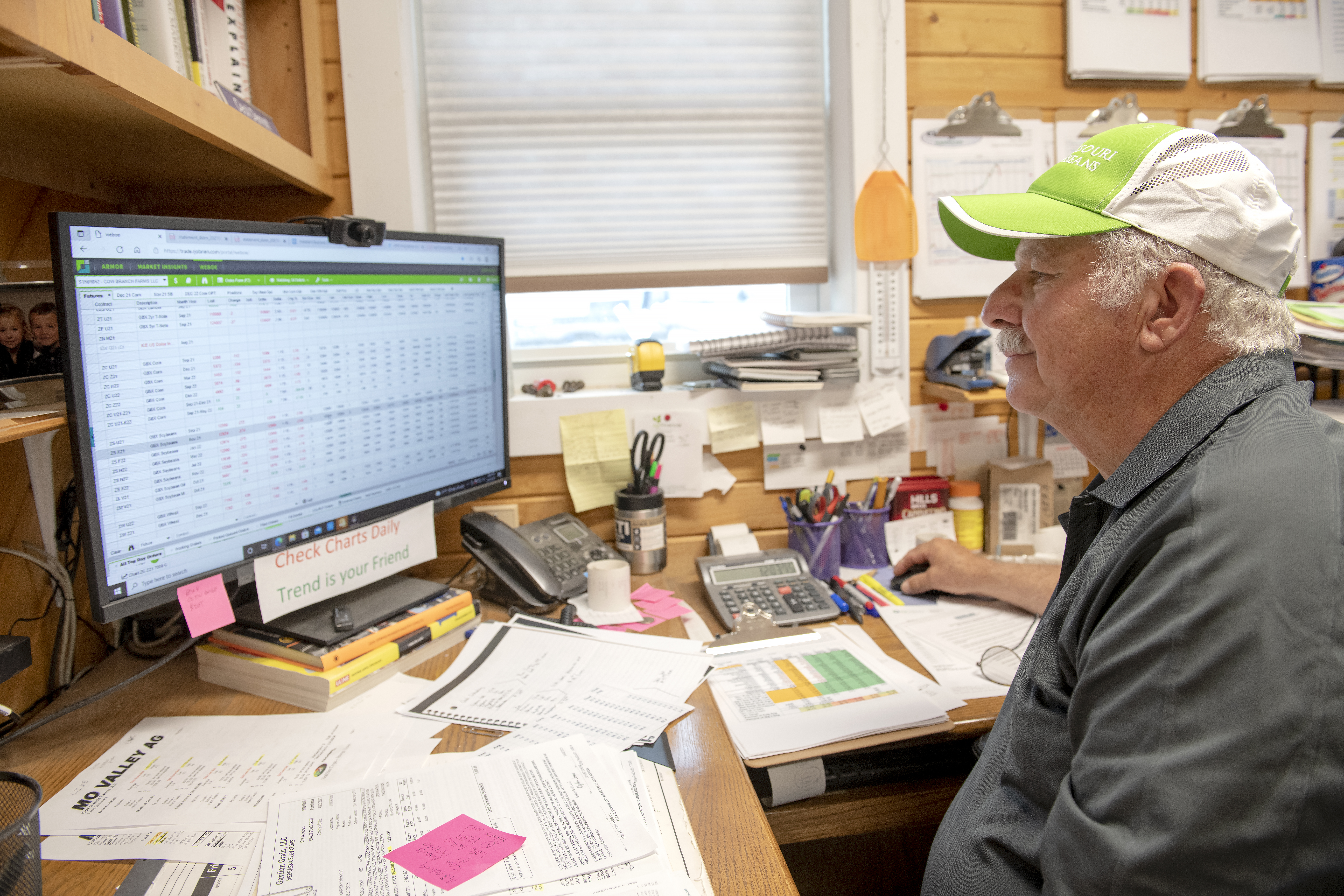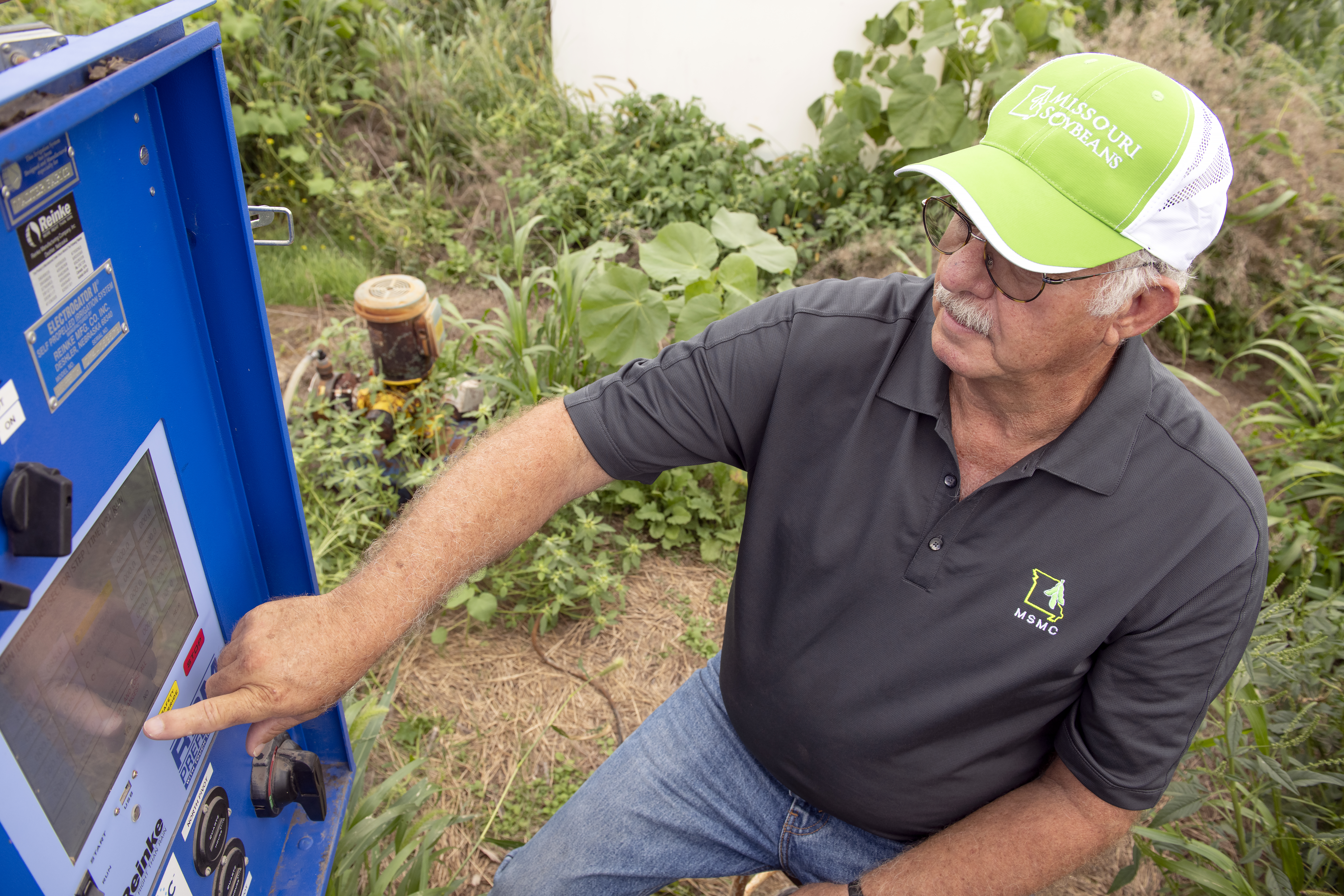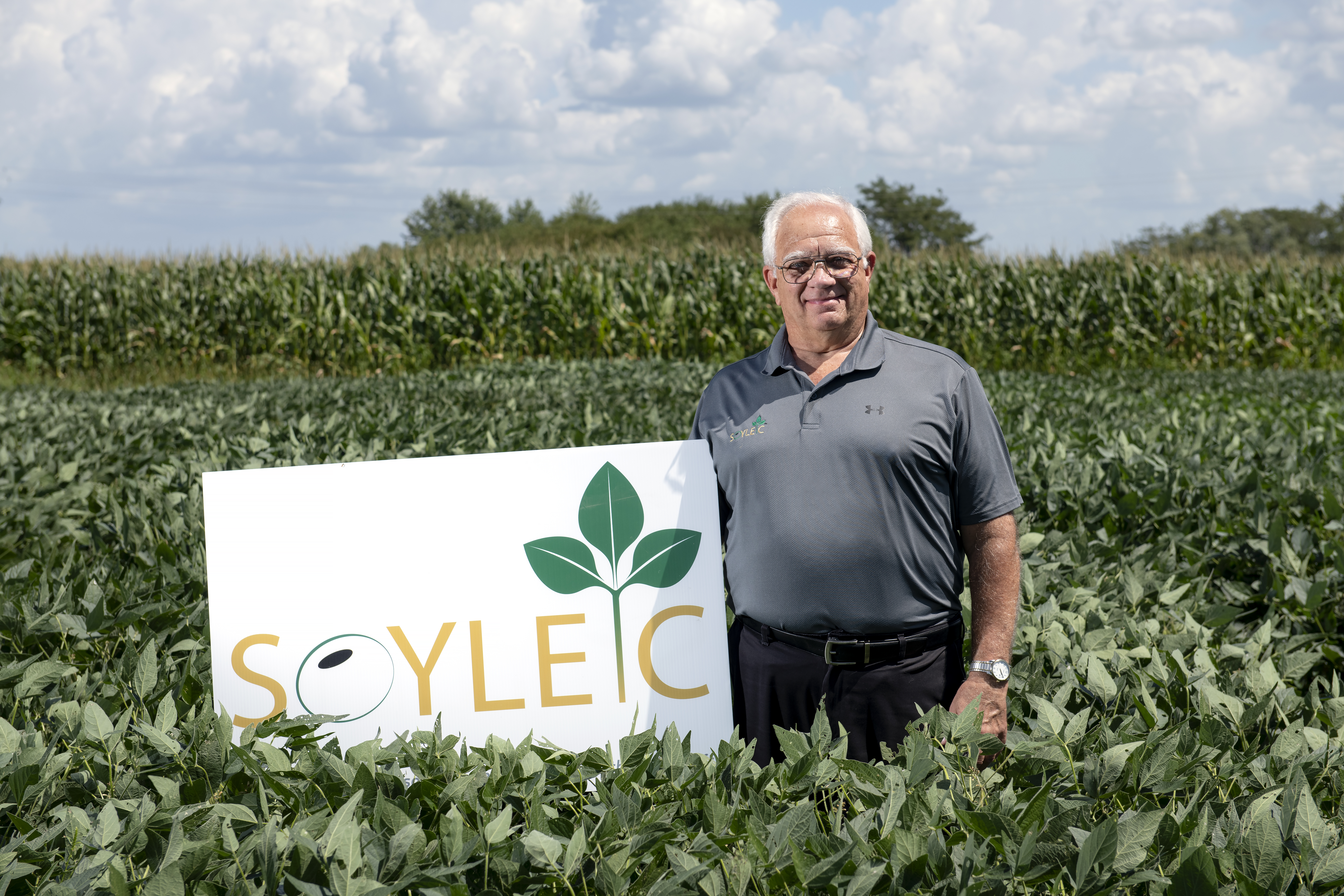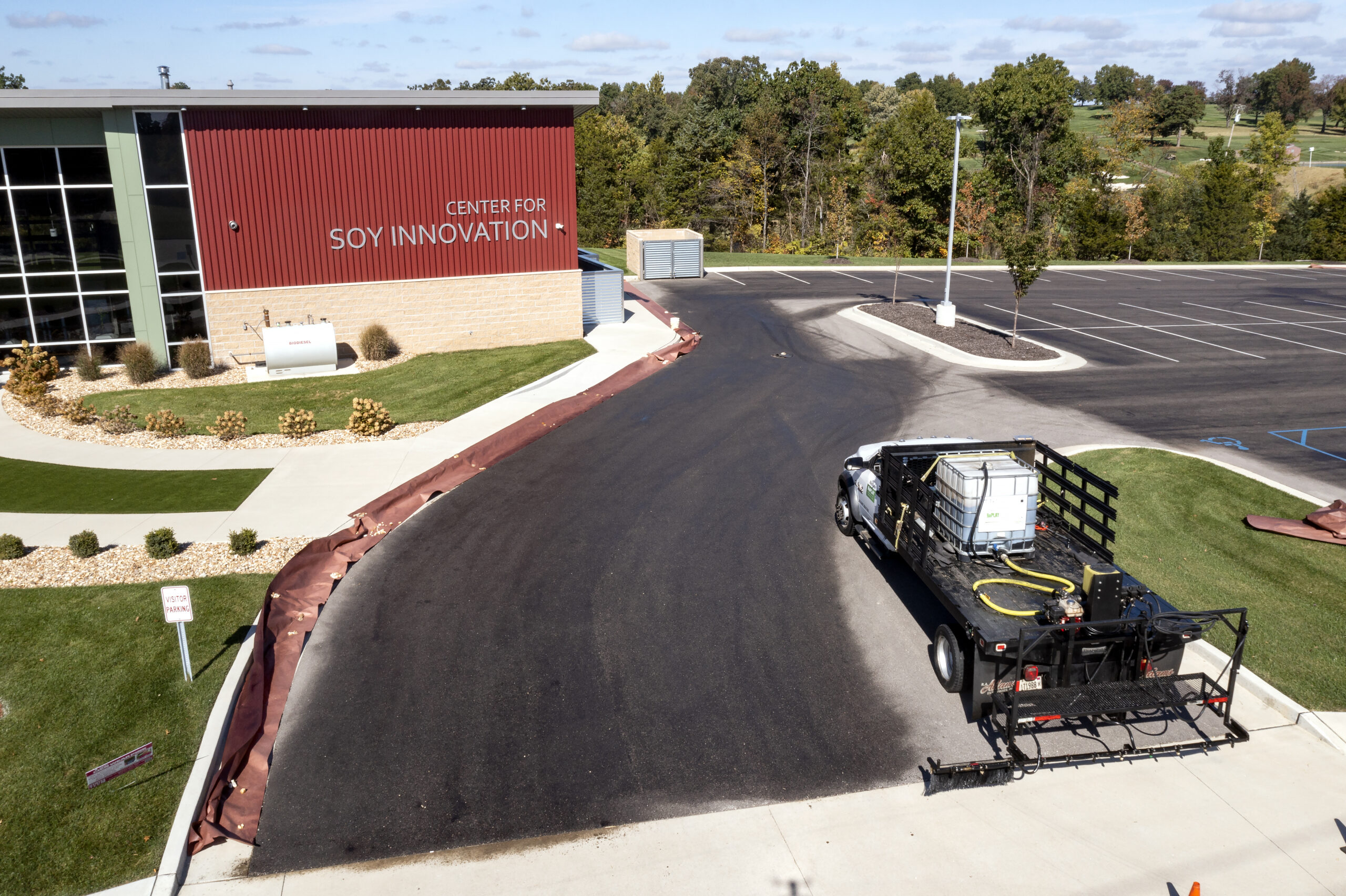For nearly 50 years, one Rock Port soybean producer has answered the call to serve.
If you ask him, Cecil DeMott will tell you he’s been drafted twice in his lifetime. The first notice came in October 1972 in the form of a certified letter from President Nixon and the Selective Service System notifying him that he was “herby ordered for induction into the Armed Forces of the United States.”
In the midst of the Vietnam War, Cecil says he knew the letter was coming. He just didn’t know exactly when. “As far as I know, I was the last one in the county to get drafted,” he adds.
Some 37 years later, a second notice to serve came as a bit more of a surprise. This time, the letter tucked inside his mailbox along a stretch of gravel road east of Rock Port in Atchison County wasn’t from the federal government. Instead, it was from the Missouri Department of Agriculture requesting his biography.
I had been nominated to run for the Missouri Soybean Merchandising Council, but I didn’t know a thing about it until the letter arrived. No one had told me anything. I didn’t get asked to run for the board. I got drafted.
“I had been nominated to run for the Missouri Soybean Merchandising Council, but I didn’t know a thing about it until the letter arrived,” Cecil says. “No one had told me anything. I didn’t get asked to run for the board. I got drafted.”
For the 69-year-old, the two experiences bookend nearly a half-century of service to his country, his community and his fellow crop producers. This past summer, Cecil completed his 12th and final year serving the state’s soybean producers on the MSMC board of directors.
“It’s been a great experience,” he says, noting that his tenure spanned three different decades. “I’ve met a lot of fantastic people, and I really feel like we helped make things better for soybean farmers.”

Town and Country
While Cecil has lived most of his life in Atchison County, he didn’t grow up as a farm kid. The DeMotts lived in Fairfax, where Cecil’s father was a butcher at the local grocery store, eventually opening his own meat locker. His mother kept the books for the Chevrolet dealership in nearby Rock Port.
“I was a town kid,” he says. “Money was tight, so everybody had to do what they could to make a dime. I had a paper route, but I did some farm work, too.”
College wasn’t part of Cecil’s plans after graduating from Fairfax High School in 1970. He surmised it was just a matter of time before Uncle Sam came calling, so he continued to work around home. Once he was drafted into the U.S. Army, he completed basic training at Fort Leonard Wood, eventually being assigned to the 3rd Infantry Division. His deployment took him to Germany for nearly 20 months.
“I was in transportation. We supplied ammunition, fuel and rations and delivered the mail to the units stationed at the U.S. training facilities there,” Cecil says. “It was the Cold War, but I’m just glad I didn’t go to Vietnam.”
Foray into Farming
After two years of active military duty, Cecil returned home to Fairfax where he found a job working for the local farm co-op. Though he didn’t have ground of his own at the time, he says he learned a lot from the farmers as he chatted with them at the sales counter.
“You could get their perspectives on how things should be done,” he recalls. “Lots of different people with a lot of different ideas.”
Cecil stayed with the co-op for five years before being lured away by a higherpaying job with Eaton Corporation in Shenandoah, Iowa, where he built truck transmissions. While working at Eaton, he met Marlene Walter at a local high school basketball game. The couple married in 1984.
His wife’s family had a long history of farming in Atchison County, first arriving from Germany in 1865. During the century that followed, the Walters had accumulated about 1,000 acres of farm ground. Marlene’s parents farmed around another 400 acres, and by the mid-1980s, the newlyweds began working their way into the operation.
“I was working at the factory and Marlene was teaching, so we had cash flow to get started,” Cecil says. “I stayed with Eaton until 1989, just long enough to get vested in the pension program. We’ve been farming full time since.”
Avoiding Losses in the Loess Hills
The northwest corner of Missouri offers unique opportunities and challenges for farming. While the DeMotts manage some acreage in the Missouri River floodplain, most of their farm ground is part of the rolling landscape known as the Loess Hills, a region along the river encompassing the westernmost parts of Iowa and Missouri and the easternmost parts of Nebraska and Kansas.
Loess is a wind-blown silt with its name derived from the German word “löss,” which translates to “loose.” The resulting soil can be highly productive for farming, but it’s also highly susceptible to erosion by both wind and rain.
“The ground here is like piling up a mound of sugar and spraying water on it,” Cecil says. “It just melts away. After Marlene and I got married, we got into terracing because we were just losing way too much topsoil.”
Terracing was only the first step toward ensuring their ground maintained its productivity. The DeMotts adopted no-till farming, and today, they’ve applied this practice across all their row-crop acres.
“To me, no-till is by far the biggest and best thing that ever happened to farming anywhere in this country,” Cecil says. “Now, we’ve started to add cover crops into the mix with our corn/soybean rotation. We’re trying everything we can to hold that soil and those nutrients in place.”
But keeping topsoil in place is only part of the equation. A grower also must stay on top of the cost of production and sell grain at the right price, Cecil notes.
“Every morning, I spend about 45 minutes listening to market commentary and analysis, just trying to get a feel for where the market is going to go that day,” he says. “It’s something you’ve got to pay attention to if you’re going to survive. It’s just amazing how a penny here or there can be the difference between profit and loss.”
Diversification within the farming operation also helps to spread out risk. The DeMotts have invested in off-farm ventures such as ethanol plants and previously operated a 100-head cattle herd. Then nearly 15 years ago, a unique opportunity presented itself when the Cow Branch Wind Energy Center was constructed.
“We have four of the wind farm’s 24 turbines on our property,” Cecil says of the Suzlon S88 turbines, each with a generating capacity of 2.1 megawatts of electricity. From base to hub, the turbines stand 260 feet above the soybeans growing below. Each blade is 140 feet long, nearly half the length of a football field. “When you farm, you’ll have good years and bad years. The turbines add income to help counter the bad ones.”
Service to Soybean Farmers
Though he may have been “drafted” into service with the Missouri Soybean Merchandising Council, Cecil says the dozen years he’s spent on the board have made him a better farmer. He also has a greater appreciation for the value of the soybean checkoff program.
“I still run into people who don’t even realize they’re paying into a checkoff,” he says. “So, trying to engage farmers and communicate everything to them can be a challenge. Nationwide, the checkoff is a huge investment — $80 million a year or more — and the farmer needs to be involved. It should be the farmers’ decision on where the money goes and what’s being done.”
While the board achieved much during his time representing District 1, Cecil says there are certain notable accomplishments of which he is particularly proud. Among them are the creation of the Bay Farm Research Facility near Columbia, the reestablishment of the North Missouri Soybean Breeding Program, the development of Soyleic® high-oleic trait technology and the opening of the Center for Soy Innovation in Jefferson City.
“Nationally, I think there are more than 500 different research projects involving soybeans,” he adds. “It’s everything from asphalt to tires to batteries, so it’s pretty exciting.”
Focus on the Future
As the father of four daughters and grandfather to five grandchildren, Cecil is looking to take a step back from the day-to-day responsibilities on the farm. He admits that he’s been “semi-retired” for a while now as his son-in-law, Chad Schomburg, has taken a more active role in the operation. Chad and his wife, Afton, live across the road.
“I do the paperwork and bookkeeping and let him do the heavy lifting,” Cecil jokes.
As self-proclaimed snowbirds, Cecil and Marlene leave northwest Missouri behind each winter, opting to spend time in Florida before returning for planting season each spring.
In addition to ending his final term on the MSMC board in 2021, Cecil also bid farewell to representing Missouri on the 13-state North Central Soybean Research Program board of directors. Over the years, he’s served his local community in many capacities, from his church and local school board to the phone company and even the farm co-op that once employed him.


